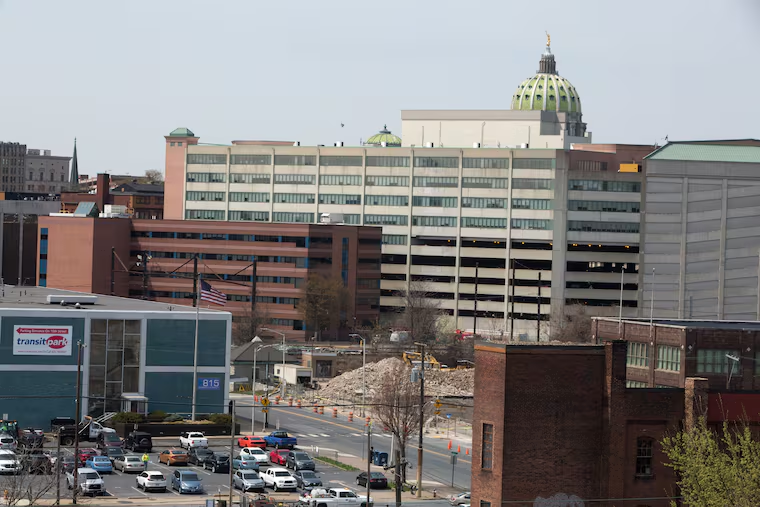Wall Street paid big fees from public funds — and takes more in secret profits
PSERS, the giant teachers pension fund, still has no plans to break out profits shared with private firms, though it will release totals for last year at next month’s board meeting, a spokesman said.

When it comes to telling the world what they buy with public pension money, Philadelphia and SEPTA are much more transparent about their outside managers’ fees than the larger Pennsylvania state pension funds.
The state funds have bragged that they are cutting such fees. There looks to be room to cut: The Public School Employees’ Retirement System, the state’s largest, pays more than $400 million a year in direct fees to hundreds of Wall Street, local and foreign money managers, whether or not the fund reaches its long-term target of better than 7% yearly returns.
Demanding tougher terms could save millions a year, which adds up over time.
But fees — as much as 1% of assets per year, or more, for some money managers — aren’t the only dollars that professional investors collect when they sign up to manage public funds.
When they are successful, private-equity investors also take home a share of the profits they earn on the public’s dime.
It’s a widespread practice: When funds do well in a given period, public pension plans let them keep not just their fees, but a slice of the profits. (These collections go by many names: “profit-sharing," “performance” or “incentive” fees, and “carried interest.")
The profit-sharing formulas that firms negotiate, and the value of the profits they keep, were for many years closely guarded secrets. Under pressure from a state pension fee commission appointed by Gov. Tom Wolf, PSERS acknowledged last year that it had agreed to let money managers keep more than $5 billion in shared profits since the 1980s.
Who gets how much? In response to an earlier request from The Inquirer, PSERS said last year that one firm, Blackstone Global Management, cofounded by Abington native Steve Schwarzman, collected $195 million in previously unreported shared profits, on top of $113 million in the direct fees recorded in PSERS’ annual reports from 2007 to 2017. PSERS said it believed that the investments’ performance was worth all that, though Blackstone’s returns often trailed the U.S. stock market.
But PSERS refused requests to tell how much its bosses have given a larger money manager, Ray Dalio’s Bridgewater Associates. PSERS still has no plans to break out shared-profits data on a firm-by-firm basis, though it will issue a report showing the total profit-sharing in 2018 at next month’s board meeting, said spokesperson Steve Esack.
Asked about its own profit-sharing, the smaller State Employees’ Retirement System “is working to determine what information can be reported publicly,” spokesperson Pam Hile told me. They must be working carefully: I first reported SERS was thinking about making this information public back in 2014.
How hard can it be to say what public entities are paying private vendors? The city of Philadelphia and SEPTA pension funds both revealed the shared profits kept by their outside investment pros last year.
Philadelphia’s Board of City Pensions paid $18 million in fees to dozens of private money managers last year — and also let 27 real estate and private equity firms keep an additional $13.5 million in shared profits.
Nearly half the shared profits — $6.6 million — went to two firms controlled by one of Pennsylvania’s best-connected investors, Ira Lubert. He is among other titles a past president of the Penn State board, former owner of the Valley Forge Casino, and a long-ago donor to Pennsylvania candidates who sat on pension boards.
Philadelphia’s shared profits on city pension investments last year include $4.1 million ceded to Lubert’s LEM Real Estate High Yield III fund, which invests in higher-risk, higher-yield real estate, and $2.5 million to LLR Equity Partners III, one of several funds that Lubert’s partners manage to invest in private companies.
LEM has taken its millions because it made the city more millions, said city spokesperson Mike Dunn. Through September 2018 (the city hasn’t posted more recent data), LEM had taken Philadelphia’s 2012 investment of $25 million, and given the city back $41.5 million, with more expected.
Again, you could have done better investing in the U.S. stock market. But that’s not the comparison that money managers and their public patrons use when dividing up profits. Those returns were enough to put Lubert’s fund “in the top [25%] of similar closed-end real estate funds,” Dunn said. No other city pension contractor collected more than $1 million in shared profits last year. Lubert didn’t respond to emails seeking comment.
At SEPTA, whose pension fund is smaller but more solvent than Philadelphia’s, 13 investment managers collected what the transit agency calls “incentive” fees, totaling $3 million, on top of $6.8 million in direct payments.
SEPTA’s biggest profit-share was to hedge fund EJF Debt Opportunities, which manages $40 million of SEPTA retirement money. Second-largest was Onex Partners, a Canadian hedge fund whose investments include Clarivate Analytics, the Philadelphia academic-data company that went public in January.
Onex Partners Fund III has collected $684,000 in shared profits plus $20,000 in direct fees on SEPTA’s investment.
Here’s how Onex earned its incentives: SEPTA invested a total of $5.7 million with Onex, starting in 2009. Onex returned $7 million to SEPTA through 2019, and still holds the investments it values at $2.6 million for SEPTA, until it can sell them and pass along the proceeds, minus its cut.
SEPTA, too, could have done better investing that money in U.S. stocks. But, again, that’s not how public investors share their profits with private managers. Compared with other private-equity investors, “we’ve done pretty well” with Onex, and with private equity generally, said SEPTA chief financial officer Tom McFadden. The returns to SEPTA were high enough to trigger the incentives written into Onex’s contract: “Overall, we are very pleased."